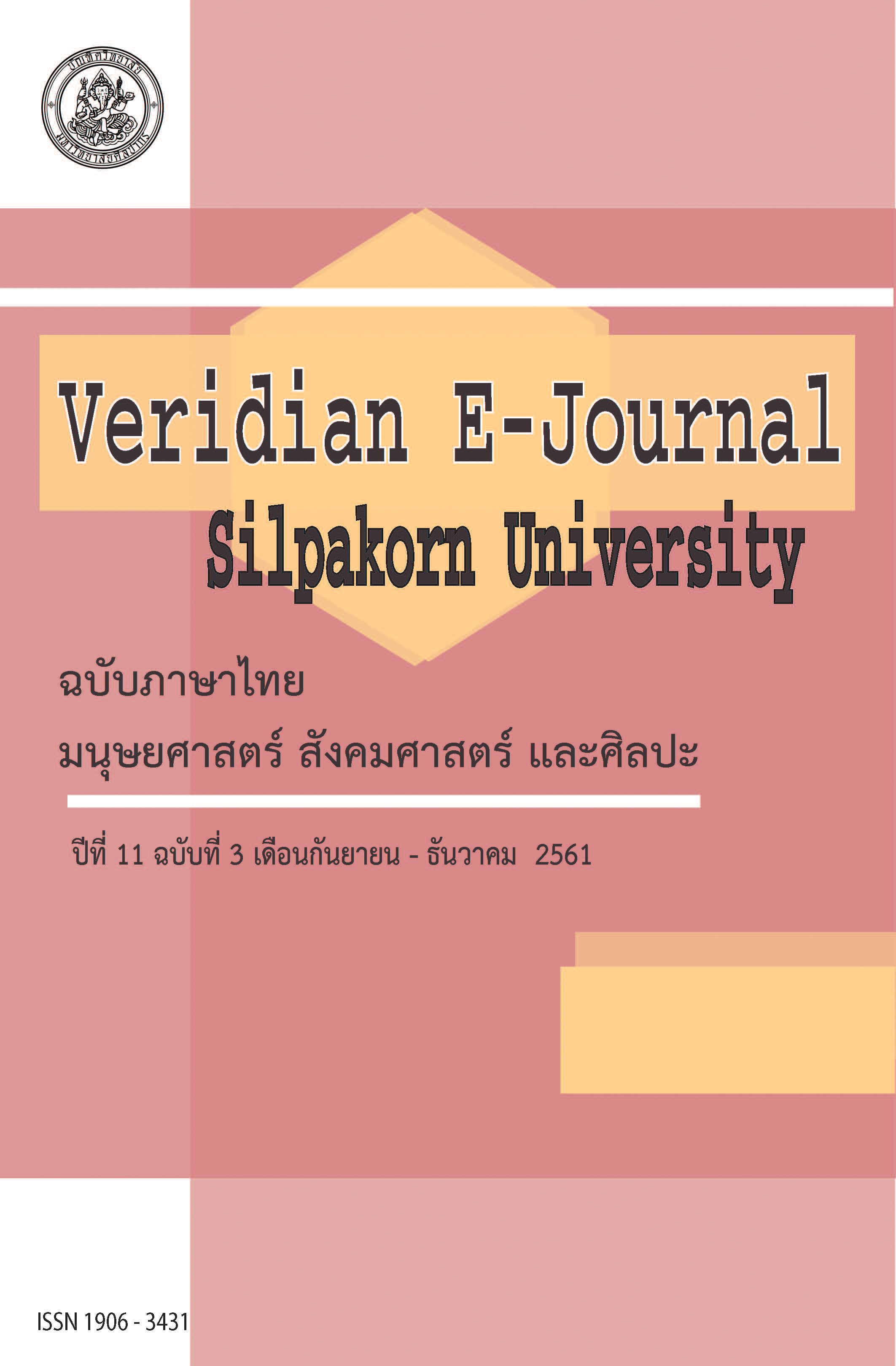สำนึกต่อถิ่นที่กับสัณฐานต่างลักษณะในเมืองกรุงเทพ (Sense of Place and Morphological Types of Bangkok)
Main Article Content
Abstract
สำนึกต่อถิ่นที่มีความสำคัญต่อการหยั่งถึงความคิดของมนุษย์ตลอดจนความหมายที่ผู้คนมอบไว้ให้แก่พื้นที่ ประสบการณ์เบื้องลึกสุดของมนุษย์ต่อการผูกสัมพันธ์กับพื้นที่ปรากฏอยู่ในสำนึกและถิ่นที่คือสภาพแวดล้อมที่ถูกสร้างภายใต้อิทธิพลแห่งสำนึกเพื่อตอบรับโครงร่างทางสังคมและสื่อสารความหมายความตั้งใจเหล่านั้นอยู่ในคราเดียวกัน แล้วถิ่นสัณฐานเมืองกรุงเทพส่งผลต่อสำนึกของผู้คนในถิ่นที่เขาอยู่อาศัยและใช้ชีวิตอย่างไร
บทความนี้เผยแพร่ผลการศึกษาสำนึกต่อถิ่นที่ในมิติประสบการณ์ของผู้คนที่เกิดขึ้นจากการใช้งานพื้นที่ ประสบการณ์นั้นยังรวมถึงความรู้สึกและการประเมินคุณค่าของพื้นที่จากมุมมองทางสังคม โดยเปรียบเทียบการรับรู้ของผู้คนระหว่างถิ่นสัณฐาน 8 ลักษณะของเมืองกรุงเทพ และนำเสนอผลรวมแห่งสำนึกต่อถิ่นที่ซึ่งบ่งชี้ความสัมพันธ์ระหว่างโครงร่างอัตลักษณ์ทางสังคมกับรูปทรงภูมิทัศน์ในแต่ละถิ่น การศึกษาพบว่าสำนึกต่อถิ่นที่มีความแตกต่างกันออกไปในแต่ละพื้นที่ ลักษณะการแฝงฝังโครงร่างวิถีชีวิตและสังคมก็หลากหลายออกไปในแต่ละถิ่น ผู้คนในถิ่นฐานแรกเริ่มของกรุงเทพเช่นชุมชนริมคลองและชุมชนย่านเมืองเก่าพึงพอใจกับการตอบสนองของสภาพแวดล้อมและมีสำนึกผูกพันและภูมิใจในถิ่นตนเป็นอย่างมากซึ่งแสดงให้เห็นการบรรจบลงรอยกันระหว่างโครงร่างทางสังคมกับภูมิทัศน์ ผู้คนในถิ่นอยู่อาศัยเฉกเช่นชุมชนซอยต่างๆมีสำนึกและความผูกพันถดถอยลงจากอดีตเมื่อภูมิทัศน์และสภาพแวดล้อมเปลี่ยนแปลงไปเพื่อตอบรับรสนิยมของคนกลุ่มอื่น การแยกตัวระหว่างโครงร่างทางสังคมกับสภาพแวดล้อมปรากฏชัดในถิ่นฐานชุมชนเมืองยุคหลัง ได้แก่ ชุมชนริมถนนในย่านเมืองใหม่ ชุมชนที่ก่อตัวขึ้นรายรอบสถานศึกษา ชุมชนรอบจุดเปลี่ยนถ่ายการเดินทาง และชุมชนสัมพันธ์แบบซุปเปอร์บล็อก การศึกษาได้ชี้ให้เห็นความแตกต่างของชุดประสบการณ์ที่เกิดจากการตอบสนองของสภาพแวดล้อมเมือง และสะท้อนถึงข้อทบทวนในความสัมพันธ์ระหว่างโครงร่างอัตลักษณ์ทางสังคมกับสภาพแวดล้อมของชุมชนเมือง
Sense of place is fundamental to shed light on the concept of environment and to disclose the social meaning with regard to space. The deepest human experience in relation to space can be found of consciousness and place is the environment constituted by the rule of consciousness, reacting to social structures and delivering environmental meanings to attach people and society. In this sense, how morphological types of Bangkok distribute the sense of place is a critical question.
This paper presents findings of the sense of place regarding user experience in space, as well as social emotion and assessment to spaces. Perceptual comparison was undertaken between eight morphological types of Bangkok and the whole picture defining relations between social identity and spatial forms was analysed of the sense of place. Diverse sense of place were found among morphological types, identified by the consistency between social identities and spatial patterns of the places. In early settlement patterns of Bangkok such as Klong and Old-Town communities, people make sense of local morphologies. Place responsiveness and attachment reflects the consistency between social identity and landscape. People, on the other hand, make less sense of Soi morphologies when the environment has been transforming in response to outsider’s way of life. The segregation between social fabrics and environment was found of late morphological patterns such as settlements accumulating on new roads, institutes, transportation hubs, and settlements with the form of superblocks. These findings point out dissimilar sets of experience influenced by environmental responsiveness, as well as demonstrate concern of involvement between social identity and urban environment.

